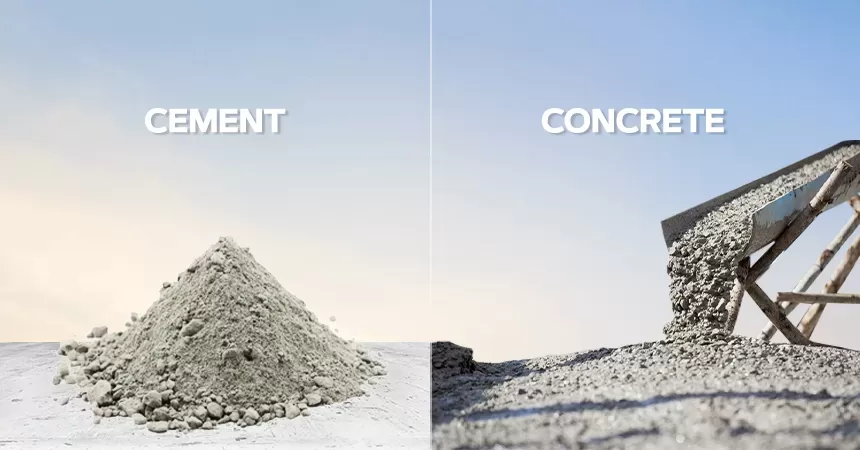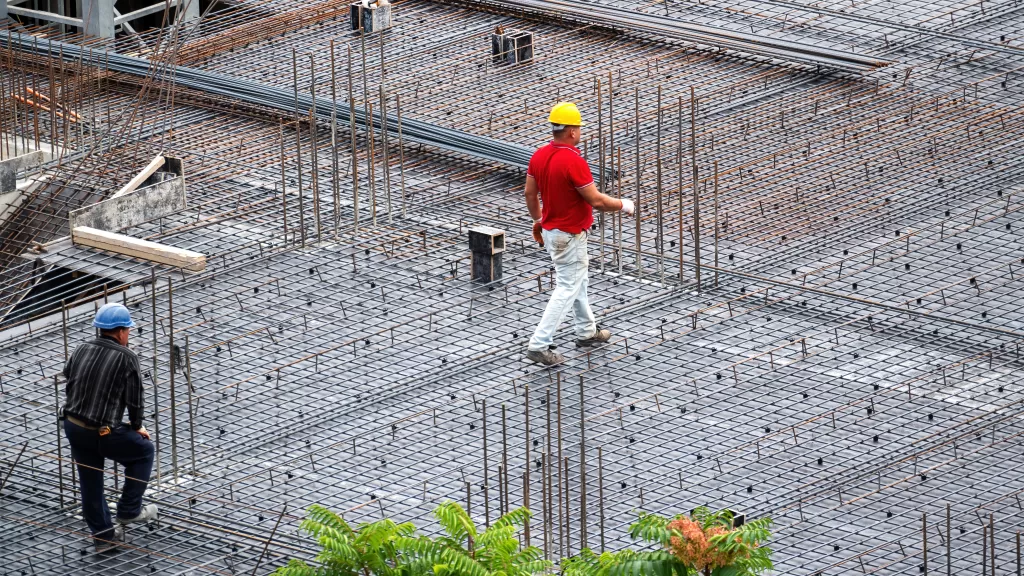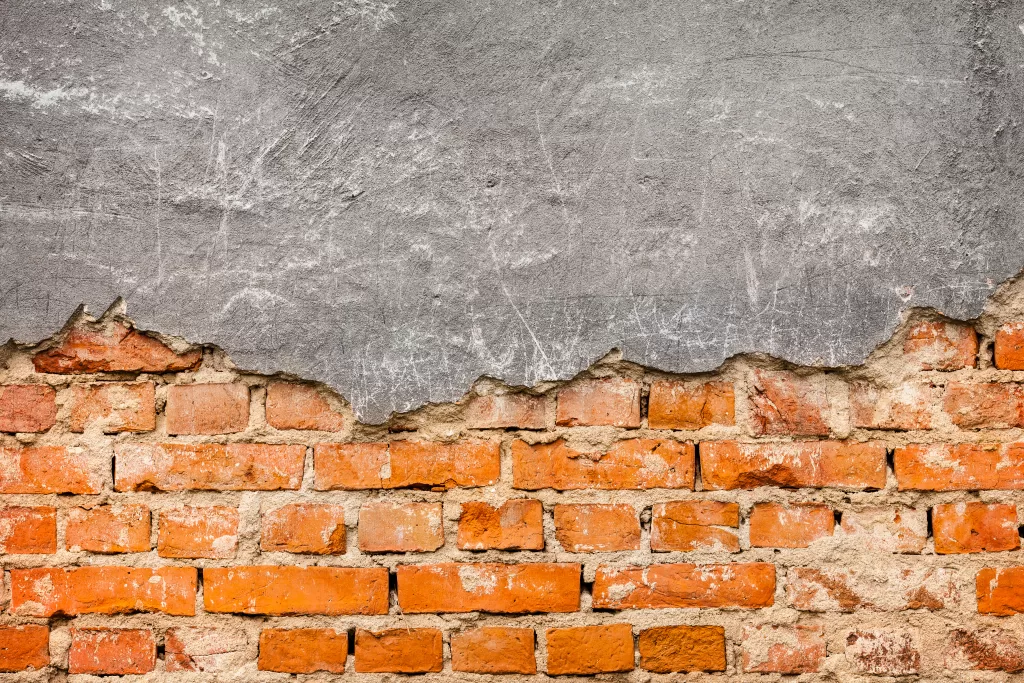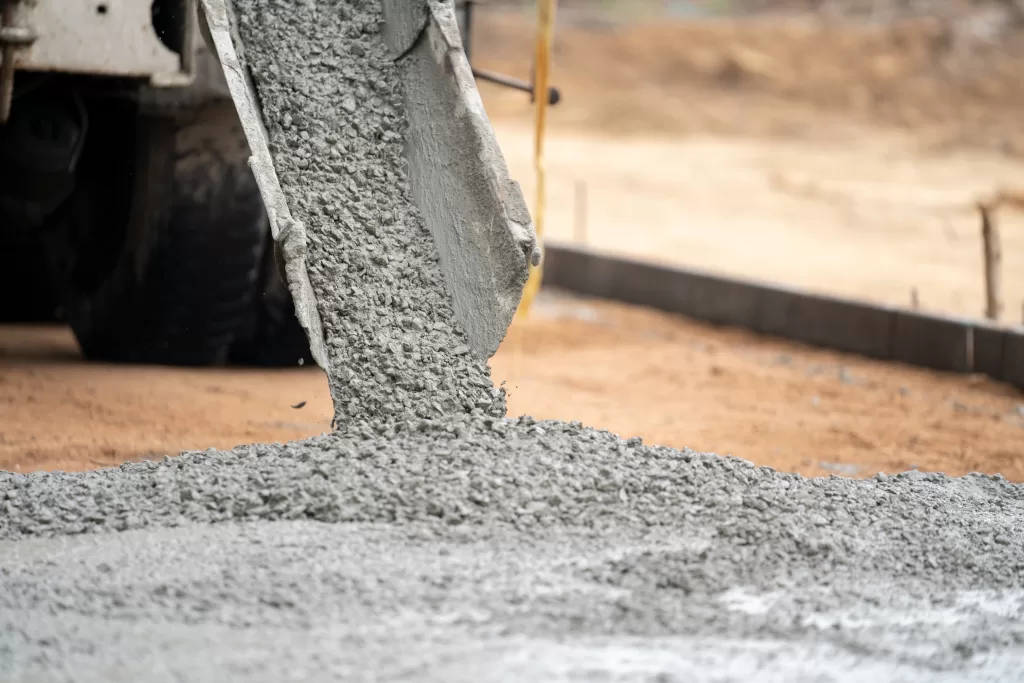Cement and concrete, although used interchangeably, are different. Basically, cement is one of the essential ingredients of concrete. Cement binds the other constituents of concrete to form strong and durable building structures. Cement cannot be used as a stand-alone construction material. It is essentially a binding agent. Here’s what you need to know about cement and concrete.
Cement Vs. Concrete: What They Mean
Cement is a binder that, when mixed with water, binds aggregates. Cement is a powder produced by finely grinding clinker. Portland cement is the most widely used cement for almost all types of construction projects. Cement is packed in special bags to prevent it from coming in contact with moisture. A cement paste is formed by mixing cement and water. Cement can be used to form concrete, mortar or plaster.
Concrete is a construction material that is used to make slabs, beams, columns, pavements, roads, buildings, etc. Concrete is poured into moulds to form slabs, which are then used to make various structures. These concrete structures are then cured for several days to gain strength and durability. Depending on the structure required, concrete can be of different types.
How is Cement Made?
The following are general steps followed in the manufacturing of cement:
- Raw materials like limestone and clay are obtained by blasting rock quarries with explosives.
- The limestone and clay are then crushed in crushing units. Additional components may be added to get the desired type of cement.
- All the components are further ground into a homogenous mixture.
- This mixture is heated at high temperatures using a kiln.
- The heated mixture produces clinker.
- The clinker is then cooled down and finely ground to form cement.
This is a typical process for manufacturing Portland cement. Portland cement is mixed with a range of ingredients to form different types of Portland cement.
How is Concrete Made?
Concrete is made up of three main components.
- Portland cement: Calcium compounds like limestone and clay are processed to form Portland cement.
- Water: Typically, potable water is added to cement to make a cement paste. Water reacts with cement and results in a chemical reaction called hydration. The reaction causes the materials to set and harden.
- Aggregates: Fine aggregates like sand or coarse aggregates like crushed rocks or gravel are mixed with cement paste to make the concrete mixture compact. Aggregates also contribute to the mechanical strength of concrete.
Cement and aggregates are mixed in different ratios per construction requirement. The concrete constituents are correctly proportioned. Cement, aggregates and water are mixed in concrete mixers until a uniform paste is produced. The water helps activate the cement which forms a paste that coats the aggregates.
Next, the concrete is placed into formworks to form various structural elements. Once the concrete is appropriately placed, it is left to harden and cure. The hardened concrete surface is sprayed with water to keep it hydrated. This process is called curing.
Concrete is graded per its compressive strength on day 28. Compressive strength is the ability of the concrete to withstand load without deflecting or cracking.
Types of Cement
Portland cement is of the following types:
Ordinary Portland Cement (OPC):
OPC is produced when Portland cement clinker is intimately grounded with gypsum. Gypsum is a naturally found sulphate mineral compound. When the compressive strength of concrete made using OPC on day 28 is 33 MPa, 43 MPa and 53 MPa, it is termed as OPC 33, OPC 43 and OPC 53, respectively.Portland Pozzolana Cement (PPC):
Portland cement clinker can be intimately ground with pozzolana (fly ash or calcined clay) to form PPC. PPC is also formed when Portland cement is blended with finely ground pozzolana.Portland Slag Cement (PSC):
Slag from blast furnaces used to melt process iron ore, is cooled and ground with Portland cement clinker to produce PSC. Similar to PPC, Portland cement can be blended with ground slag to form PSC.
While all three types of cement can be used in general construction projects, PPC and PSC are especially used in marine works.
Types of Concrete
Different concrete types are produced based on the method of construction, area of application, and the constituent materials:
Normal Strength Concrete:
Normal strength concrete is a simple mix of cement, water and aggregates. It has an initial setting time of 30 to 90 minutes and is used in simpler construction projects where high tensile strength is not required.Reinforced Cement Concrete (RCC):
Metal bars are placed in the concrete to increase its tensile strength. RCC is used in high rise buildings. Concrete reinforced with wire mesh is known as ferrocement.Prestressed Concrete:
In this type of concrete, the bars used as reinforcement are stressed. Once the concrete hardens, it will be put into compression, resulting in a strong structure that will resist tension.High Performance Concrete (HPC):
HPC is a special type of concrete that has high workability, strength, density and resistance to chemical attacks. HPC should possess properties like ease of placement, early strength and long-term mechanical properties, to name a few.
Explore a wide range of JK Super Cement that suit your construction requirements.
FAQs
Can cement be used in construction by itself?
No, it can’t. Cement is a chemical that is used as a binder. It can be useful only when it’s mixed with other ingredients like water, sand or aggregates.
How much cement is required to make concrete?
In most concrete mixtures, the proportion of cement is generally the lowest. For instance, the mix ratio for different concrete grades are as follows:
| Grade | Cement : Sand : Coarse Aggregates |
| M10 | 1 : 3 : 6 |
| M15 | 1 : 2 : 4 |
| M25 | 1 : 1 : 2 |
Also, depending on the construction requirements, an engineer may determine the mix ratio.
What is the setting time of concrete?
Setting time of the concrete is the time taken by the concrete to convert from its liquid state to solid state. Initial setting time is the time taken by the concrete to transform from its liquid to plastic state. Final setting time is the time when the concrete loses its plasticity.
Which is more durable, cement or concrete?
Concrete that makes the construction of buildings possible lasts for decades. Cement itself has a shelf-life of about three to six months or longer if stored away from moisture. However, cement requires testing before use if it has not been used for more than 3 months.
*Disclaimer: The information provided above is for general purpose and should not be used as a substitute for professional advice.














